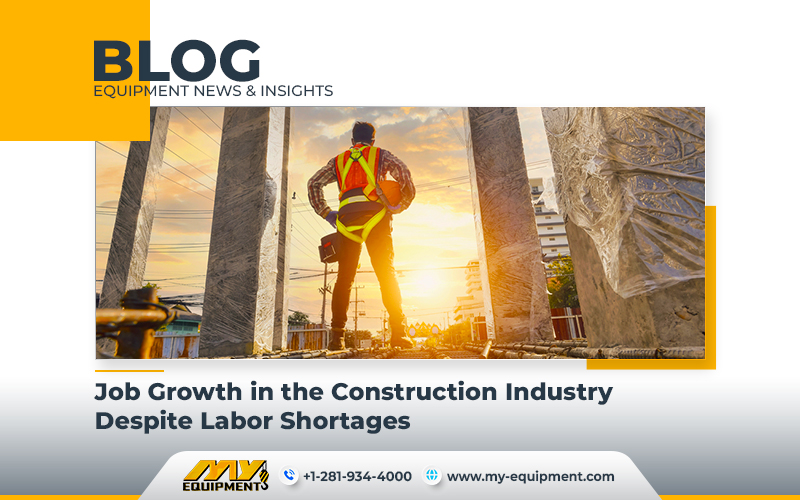Recent reports paint a dual picture for the construction industry in the United States. On one hand, there is evidence of expansion, with job growth and ongoing projects fueled by government funding from infrastructure initiatives. On the other hand, the industry faces a chronic labor shortage, making it challenging to meet the rising demand for skilled workers. The latest findings from surveys and data released by the U.S. Bureau of Labor Statistics (BLS) and Associated Builders & Contractors (AGC) help to provide an overview of the current state of the construction sector.
Construction Industry Adds 22,000 Jobs in August
In August, the U.S. construction industry added 22,000 jobs, continuing an upward trend. This positive development comes after an average monthly increase of 17,000 jobs over the past year. Notably, specialty trade contractors contributed 11,000 positions, and heavy and civil engineering construction saw an increase of 7,000 jobs. Employment in the construction sector showed consistent growth throughout the month.
Labor Shortages Persist Even With Wage Increases
Despite the addition of jobs and competitive wages, the construction industry still grapples with a labor shortage. According to a BLS report published in August, construction workers’ average hourly wage increased by 5.7 percent over the past year, reaching $34.40 per hour in August. Plus, construction firms paid a wage premium of 18.6 percent compared to the average hourly wage for all private-sector production employees.
Challenges in Recruiting Skilled Personnel
Despite an unemployment rate of only 3.9 percent for job seekers with construction experience in August, many contractors continue to face difficulties in recruiting suitable personnel. The AGC report highlights the industry’s ongoing struggle to find and retain skilled workers, despite competitive wages and demand for labor.
Non Residential Mega projects Drive Construction Expansion
The expansion in the construction sector is being propelled by non residential projects, particularly mega projects valued at over $1 billion. These projects are concentrated in regions like Ohio, Texas, and Arizona, where skilled individuals are drawn by the promise of higher pay rates. This geographical disparity can result in construction booms in certain areas while others experience a labor shortage.
No Immediate Stabilization in Sight
The data suggests that the construction industry may not experience a quick stabilization in labor availability. To ensure the viability of their firms and keep projects on track, construction businesses are focusing on acquiring competent workers and retaining their existing workforce.


 1400 Broadfield Blvd, Houston, TX 77084,
USA.
1400 Broadfield Blvd, Houston, TX 77084,
USA. omer@my-equipment.com
omer@my-equipment.com